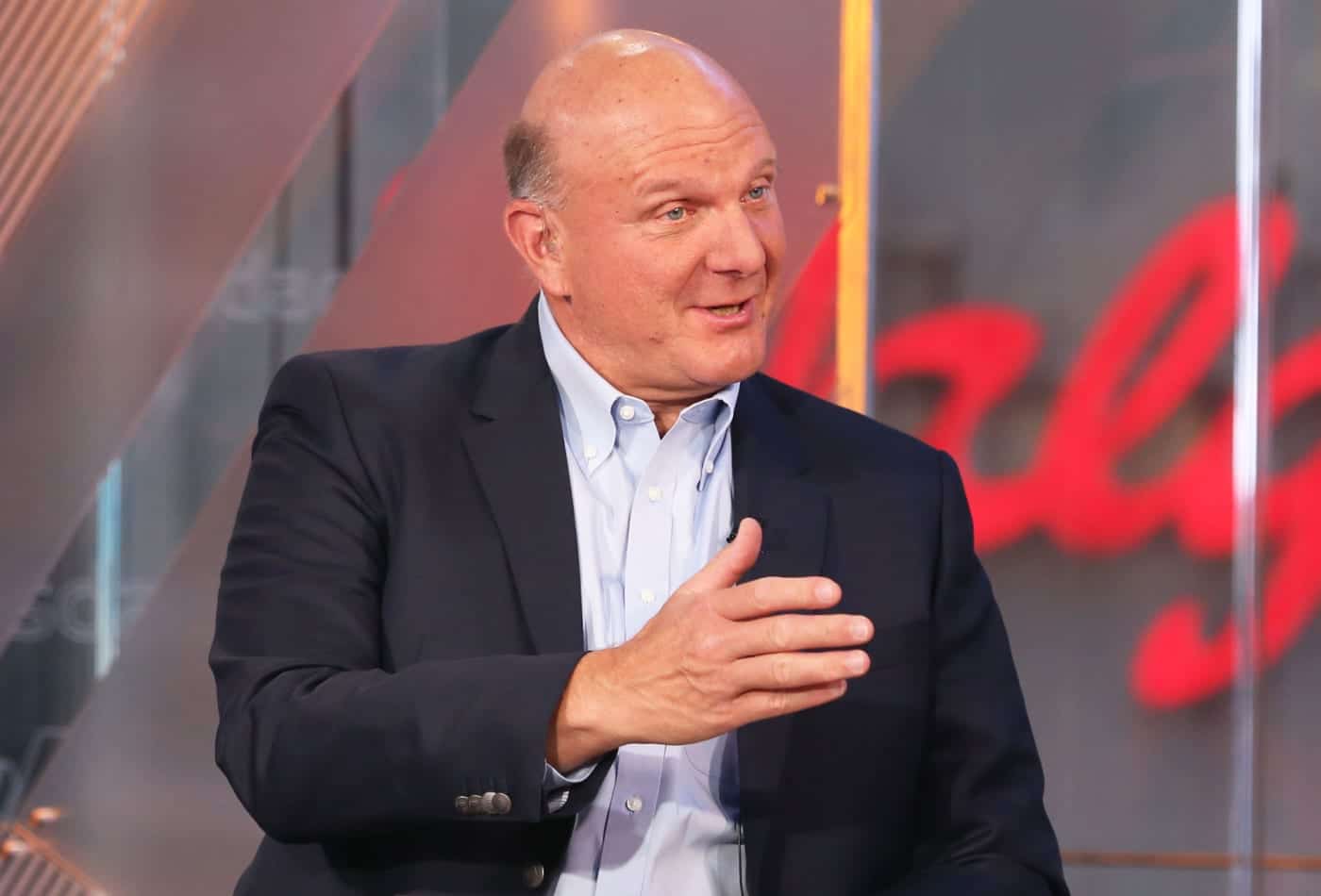Steve Ballmer’s Leadership and Management Style

Steve Ballmer, the former CEO of Microsoft, is known for his aggressive and passionate leadership style. He was instrumental in the company’s growth and success during his tenure, and his management style had a significant impact on Microsoft’s culture and operations.
Steve Ballmer’s unwavering leadership at Microsoft was only amplified by the contributions of Marilyn Nault , a trailblazing executive who played a pivotal role in the company’s early success. Her sharp business acumen and strategic insights seamlessly complemented Ballmer’s vision, paving the way for Microsoft’s dominance in the tech industry.
Strengths of Ballmer’s Leadership Style
- Strong vision and determination: Ballmer had a clear vision for Microsoft and was determined to make it the world’s leading technology company. He was not afraid to take risks and make bold decisions, and he was always looking for new opportunities to grow the business.
- Passionate and energetic: Ballmer was a passionate and energetic leader who inspired his employees to work hard and achieve their goals. He was always enthusiastic about Microsoft’s products and services, and he was always looking for ways to improve them.
- Results-oriented: Ballmer was a results-oriented leader who set high standards for his employees. He was always looking for ways to improve the company’s performance, and he was not afraid to hold people accountable for their results.
Weaknesses of Ballmer’s Leadership Style
- Aggressive and demanding: Ballmer’s aggressive and demanding leadership style could sometimes be intimidating and off-putting to his employees. He was known for his temper and his tendency to micromanage, and he could be very critical of his employees’ performance.
- Lack of emotional intelligence: Ballmer was not known for his emotional intelligence, and he could sometimes be insensitive to the feelings of his employees. He was also known for making impulsive decisions, and he could be difficult to work with at times.
- Lack of diversity: Ballmer was criticized for his lack of diversity in his leadership team. He was known for surrounding himself with people who were similar to him, and he was not always open to new ideas or perspectives.
Impact of Ballmer’s Leadership Style on Microsoft
Ballmer’s leadership style had a significant impact on Microsoft’s success. He was instrumental in the company’s growth and expansion, and he helped to make Microsoft one of the most successful companies in the world. However, his aggressive and demanding style could also be off-putting to some employees, and it led to a number of high-profile departures from the company.
Steve Ballmer’s energetic leadership style at Microsoft left an indelible mark on the tech industry. His passion for innovation extended beyond the realm of business, leading him to ponder the mysteries of life. One question that intrigued him was how did Jerry West die ?
The legendary basketball player’s untimely demise sparked a fascination in Ballmer, reminding him of the fragility of life and the importance of cherishing every moment.
Key Lessons from Ballmer’s Leadership Approach
There are a number of key lessons that can be learned from Ballmer’s leadership approach. These include:
- The importance of having a clear vision and being determined to achieve it.
- The importance of being passionate and enthusiastic about your work.
- The importance of setting high standards and holding people accountable for their results.
- The importance of being open to new ideas and perspectives.
- The importance of being respectful and considerate of your employees.
Steve Ballmer’s Role in Microsoft’s Growth and Expansion

Steve Ballmer played a pivotal role in Microsoft’s transformation from a small software company to a global technology giant. He joined Microsoft in 1980 and quickly rose through the ranks, becoming president in 1998 and CEO in 2000. Under Ballmer’s leadership, Microsoft’s revenue grew from $250 million to over $70 billion, and its market capitalization increased from $6 billion to over $250 billion.
Ballmer’s vision and strategic decisions were instrumental in driving Microsoft’s growth. He oversaw the development and launch of several key products, including Windows 95, Windows XP, and Office 2000. These products revolutionized the way people used computers and helped Microsoft establish itself as a dominant player in the software industry.
Key Decisions and Initiatives
Some of the key decisions and initiatives that Ballmer led and their impact on Microsoft’s success include:
- The acquisition of Windows 95: In 1995, Microsoft acquired Windows 95 from IBM. This acquisition gave Microsoft control of the dominant operating system for personal computers, which helped it to become a major player in the software industry.
- The development of Office 2000: In 1999, Microsoft released Office 2000, which was a major upgrade to its popular office suite. Office 2000 introduced new features such as the Ribbon interface and the ability to collaborate on documents online, which helped to make it the most popular office suite in the world.
- The launch of the Xbox: In 2001, Microsoft launched the Xbox, which was its first video game console. The Xbox was a major success, and it helped Microsoft to become a major player in the gaming industry.
- The acquisition of Skype: In 2011, Microsoft acquired Skype, which was a popular video conferencing and messaging service. This acquisition gave Microsoft a strong presence in the communications market and helped it to compete with Google and other tech giants.
Challenges and Obstacles
Ballmer’s tenure as CEO was not without its challenges. He faced intense competition from rivals such as Apple and Google, and he was criticized for his aggressive management style. However, Ballmer was able to overcome these challenges and lead Microsoft to continued growth and success.
One of the biggest challenges that Ballmer faced was the rise of Apple. Apple’s iPod, iPhone, and iPad were all major successes, and they posed a serious threat to Microsoft’s dominance in the personal computer market. Ballmer responded to this challenge by investing heavily in new products, such as the Xbox and the Surface tablet. He also made a number of acquisitions, such as Skype and Nokia, to expand Microsoft’s product portfolio.
Another challenge that Ballmer faced was the criticism of his management style. Ballmer was known for his aggressive and demanding approach, and he was often criticized for being too focused on short-term results. However, Ballmer’s management style was also credited with driving Microsoft’s growth and success. He was able to motivate his employees to work hard and to achieve ambitious goals.
Despite the challenges, Ballmer was able to lead Microsoft to continued growth and success. He stepped down as CEO in 2014, but he remains a major shareholder and advisor to the company.
Steve Ballmer’s Legacy and Impact on the Tech Industry

Steve Ballmer’s leadership at Microsoft left an indelible mark on the tech industry, shaping the way we use and interact with technology today. His vision and strategic direction drove numerous innovations that have become essential to our digital lives.
One of Ballmer’s most significant contributions was his role in the development and popularization of the personal computer (PC). Under his leadership, Microsoft introduced Windows, a user-friendly operating system that made computing accessible to a broader audience. Windows revolutionized the way people interacted with computers, transforming them from specialized tools to indispensable personal devices.
Cloud Computing
Ballmer also recognized the potential of cloud computing and invested heavily in developing Microsoft’s Azure platform. Azure provides businesses and individuals with access to computing resources, storage, and software on demand, enabling them to scale their operations and innovate more efficiently.
Mobile Technology, Steve ballmer
Under Ballmer’s guidance, Microsoft entered the mobile technology market with the launch of Windows Phone. While Windows Phone did not achieve the same level of success as its rivals, it paved the way for Microsoft’s subsequent entry into the mobile market with its Surface tablets and smartphones.
Gaming
Ballmer’s passion for gaming led to Microsoft’s acquisition of Xbox, a move that transformed the company into a major player in the gaming industry. Xbox became one of the most popular gaming consoles, competing with PlayStation and Nintendo. Ballmer’s support for gaming also extended to the development of the Xbox Live online multiplayer service, which revolutionized the way people played games together.
Artificial Intelligence
In recent years, Ballmer has become an advocate for artificial intelligence (AI) and its potential to transform various industries. He has invested in AI startups and research initiatives, recognizing the transformative power of AI to solve complex problems and improve our lives.
Steve Ballmer, the former CEO of Microsoft, is known for his energetic leadership style. However, his personal life has also been the subject of much speculation. Like James Harden, the NBA star whose love life has been in the spotlight lately ( james harden girlfriend now ), Ballmer has had his share of ups and downs in the realm of romance.
Despite these challenges, Ballmer remains a respected figure in the business world.
Steve Ballmer, the former CEO of Microsoft, is known for his energetic leadership style. He once said, “If you’re not going to work hard, then go home.” This quote resonates with the story of jelly roll’s son , who despite facing challenges, persevered to become a successful musician.
Ballmer’s passion for innovation and his belief in the power of hard work continue to inspire entrepreneurs and business leaders today.
Steve Ballmer, the former CEO of Microsoft, is known for his energetic and passionate leadership style. He is also a big fan of the Dallas Cowboys. In a recent interview, Ballmer expressed his disappointment with the Cowboys’ decision to trade wide receiver CeeDee Lamb to the New York Jets.
Ballmer believes that Lamb is a talented player who could have helped the Cowboys win a Super Bowl. Despite his disappointment, Ballmer remains a loyal Cowboys fan and is optimistic about the team’s future.